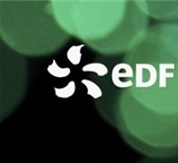THERMAL ANALYSIS OF HIGH LEVEL WASTE GEOLOGICAL DISPOSAL MODULE WITH THE THERMAL CODE SYRTHES
Résumé
Within the framework of the 2006 French law on sustainable management of radioactive materials and waste, an evaluation of the industrial perspectives of GENERATION IV Fast Reactors deployment is requested for 2012. In this context, questions about waste storage capacities are of interest for EDF (Electricité de France). The storage area is driven by thermal requirements on the argilite formation surrounding the canisters. The size of the final radioactive waste geological repository is one indicator of interest in these studies. The repository considered has been proposed by ANDRA, the French national agency in charge of the radioactive waste management. Optimisation studies on the number of canisters per cell or the distance between two cells using the open source thermal code SYRTHES and SALOME have been presented in previous conferences. However, due to the very large number of calculations induced they are performed on a limited domain. To evaluate the thermal conservatism of a reduced domain, three levels of modeling have been used : a domain limited to half a cell, a slice of half a module (ie three half cells), and a complete half module leading to a very large finite element model (more than 82 million cells), in which all the disposal cells (around 150 of them containing 6 waste packages each) are represented. Two theoretical heat deposit functions have been used representative of waste leading to early and late temperature peaks. This paper presents the thermal code SYRTHES used to simulate large model for transient lasting up to 4000 years. Results show that clay temperature surrounding cells located on the periphery are cooler than those located near the center of the module. For early peaks a reduced domain is well adapted for optimization studies, while for late peak wastes, taking into account an extended domain seems interesting since the large case underlines that optimizing on a reduced domain is clearly conservative.
Origine : Fichiers produits par l'(les) auteur(s)

